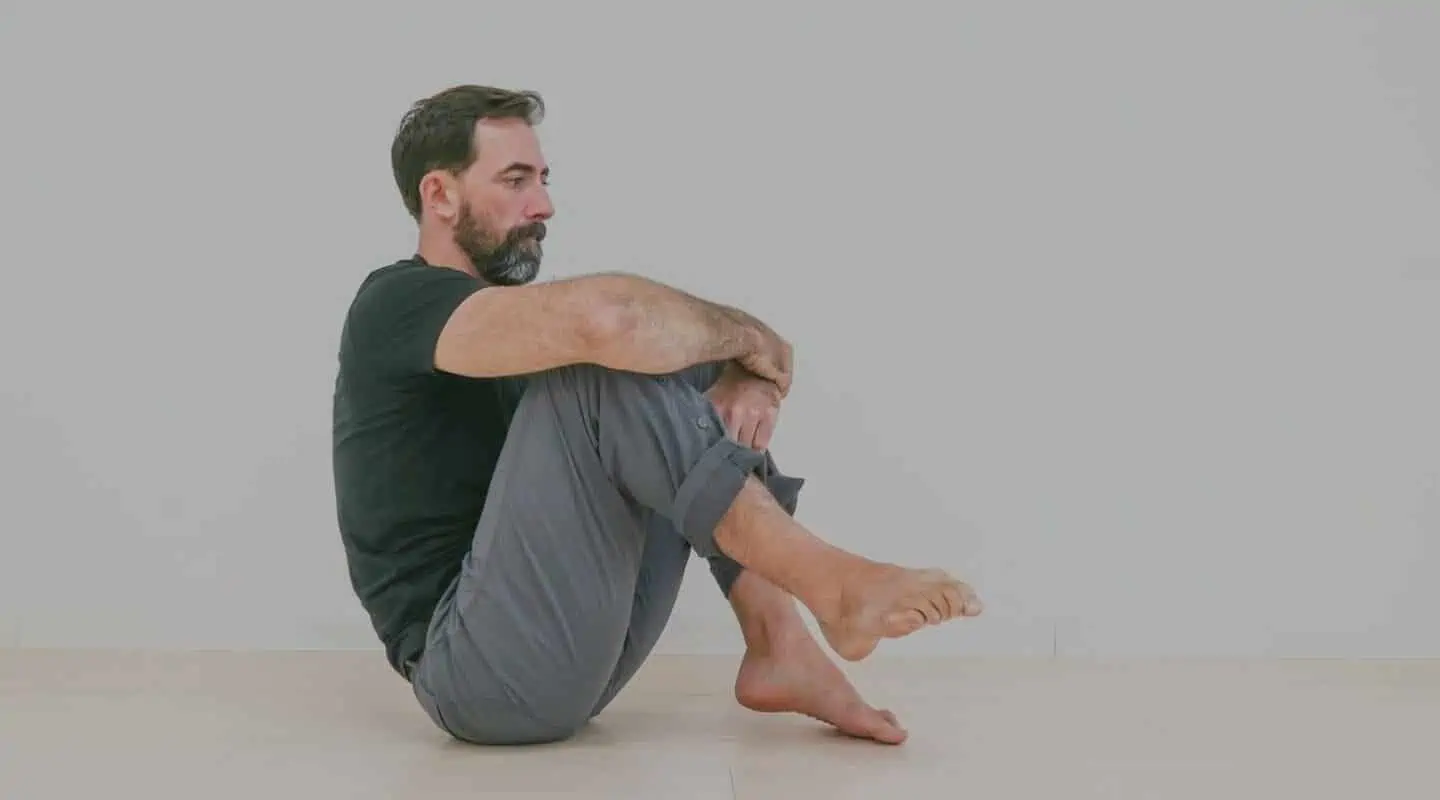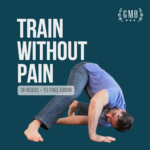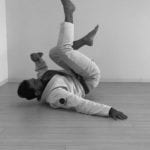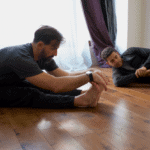Our feet and ankles are very important, considering we couldn’t stand, walk, run, or roundhouse kick someone in the face without them. Unfortunately, our lower limbs tend to be neglected unless something goes wrong.
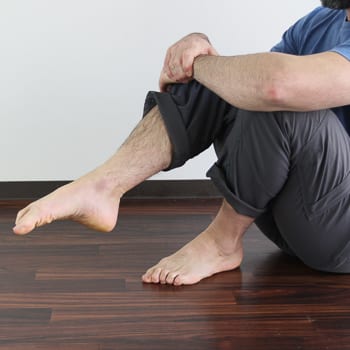 In my 18+ years as a physical therapist, I’ve worked with countless patients with foot and/or ankle trouble, and have seen the impact these issues can have on training and regular activities.
In my 18+ years as a physical therapist, I’ve worked with countless patients with foot and/or ankle trouble, and have seen the impact these issues can have on training and regular activities.
If you’re living with pain or limitations in your feet, ankles, or calves, it doesn’t have to be that way. This article includes three videos to give you all the exercises you need to overcome limitations in this area. It’s helped thousands of people, including one client of ours, Brandon McNaughton:
“I’ve been doing the exercises from your feet article for about a month now. Such results. Not only have I increased mobility in my ankles, but I can now do more with my toes. I am beginning to be able to spread my toes! I haven’t been able to do this since… I can’t even remember. Childhood? My big and pinky toes move sideways now. The middle three are still pretty locked, but progress!”
Before we dive in, I just want to remind you that the information in this article is no substitute for being seen by a professional in-person if you have ongoing issues–particularly related to pain or weakness.
Learn to Train without Pain
Fix the restrictions causing pain in your neck, shoulders, back, hips, knees, and ankles.
👉 More Details
Your Leg Bone is Connected to Your Heel Bone (with another bone in between)
Let’s go over some basic anatomy, so you understand what’s going on in your feet, ankles, and/or calves. (Don’t worry, it’ll be just enough for a general overview, not enough to perform surgery or anything.)
Your lower leg is made up of the bigger tibia on the inside and the smaller fibula on the outside, then connects lower down to the talus and the calcaneus (heel), then to the five small bones of the instep and the metatarsals and phalanges (your toes).
Lots of different sized ligaments connect the bones together for stability, along with various muscles from the big calf to the small muscles that move your toes.
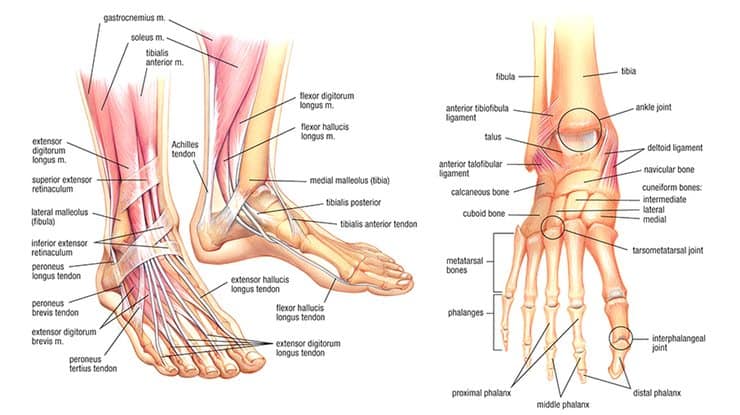
The ankle and foot can move in a great variety of angles to provide stability and dexterity, carrying us over all types of terrain from soft sand to rocky ground. Your ankle is not like a hinge on a door, and your foot isn’t just one big lump you slide your socks onto.
All the large and small joints in this area work together to provide this nimbleness, but only if we keep them moving like they are supposed to!
How the Network of Muscles in Your Legs Work Together
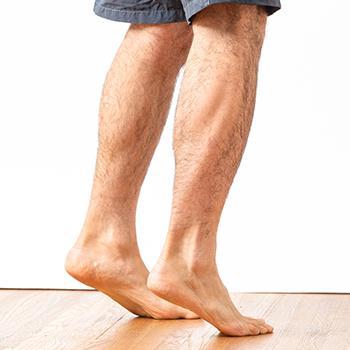 Our calves (the bigger gastrocnemius and smaller, deeper soleus muscles) point the foot down, giving us the power to rise up on our toes and assist with running and jumping. But even with the foot flat on the ground, our calves provide stability in squatting, lunging, and other big movements.
Our calves (the bigger gastrocnemius and smaller, deeper soleus muscles) point the foot down, giving us the power to rise up on our toes and assist with running and jumping. But even with the foot flat on the ground, our calves provide stability in squatting, lunging, and other big movements.
On the front and sides of the shin are the anterior tibialis, posterior tibialis, and peronei muscles, which provide stability like stirrups and slings, and also the fine motor control that keeps us balanced and steady.
Down into the foot are many small muscles that control our arches and toes. These foot intrinsic muscles are the most at risk for atrophy from disuse when we don’t actively get out of our shoes and move our feet as we’re meant to do.
All Those Parts—What Could Possibly Go Wrong?
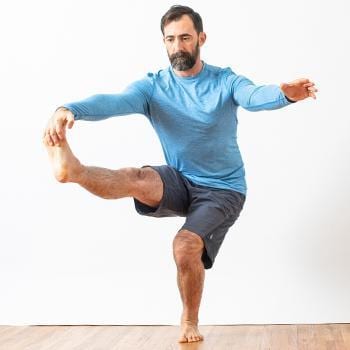 With all this considered, it’s easy to see the complexity of large and small muscles and joints working together to keep us upright and walking, as well as running, jumping, and balancing.
With all this considered, it’s easy to see the complexity of large and small muscles and joints working together to keep us upright and walking, as well as running, jumping, and balancing.
The coordination and differentiation of all these possible movements is key to foot and ankle control, and to moving freely and gracefully through your feet.
Two of the most common complaints in this area are:
- Stiff ankles and feet–If the smaller muscles are too weak to support your foot and ankle, your body reacts by increasing the tension where it can: in the bigger muscles. This causes tightness in the calf and ankle. Stretching might help a bit, but improved control and strength in the foot is the solution.
- Collapsed arches–This may be caused by poor mobility in the midfoot, along with weak posterior tibialis and intrinsic muscles. With improved mobility and strength in these areas, the arches can correct themselves over time.
Below we’ll discuss a variety of exercises with an emphasis on coordination and dexterity to wake up dormant muscles and restore proper mobility and control over this important area.
8 Foot Exercises for Healthy Feet and Ankles
The exercises we show here have an emphasis on active movement in various angles and ranges of motion.
A lot of people don’t fully explore the movement our feet and ankles are capable of, and this results in stiffness and weakness. The first step is knowing that it is actually possible to move this way, and the next and best step is to practice!
👉 Download this routine as part of Train Without Pain.
In the next sections we’ll look at calf-stretches and self-massage. But first, here are the key points to keep in mind for each of these exercises. Just remember never to push into pain—work at a level that works for your body.
1. Foot Circles with Toes Flexed (Curled)
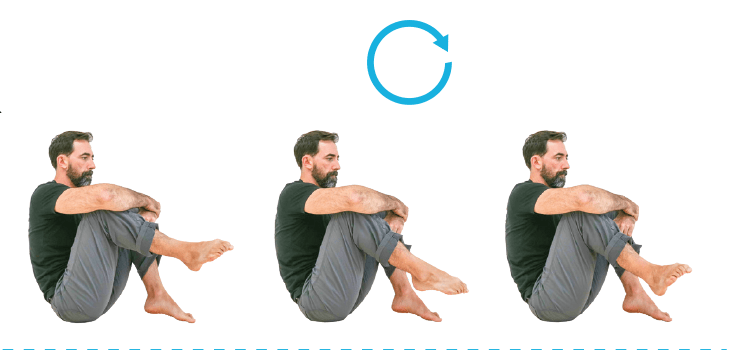
- Keep the toes curled gently (not too tight, or your foot may cramp).
- Make a slow and controlled circle in one direction for the alloted reps, then switch directions.
- You may need to take a break between reps to prevent cramping.
Do 10-15 reps in each direction for 2-3 sets.
2. Movement Coordination
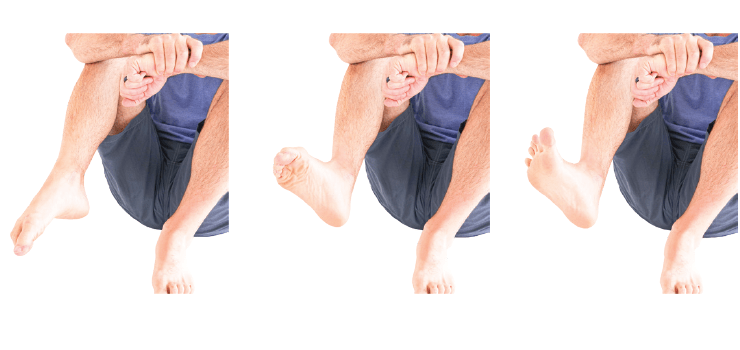
- Here, you’ll be working on controlling the movements of your toes and feet with your ankles.
- Curl your toes as you point the foot, then extend the toes as you flex the foot.
- Then, reverse those movements. Extend the toes as you point the foot, then curl the toes as you pull the foot back.
Do 10 repetitions of both variations for 2 sets.
3. Diagonal Patterns
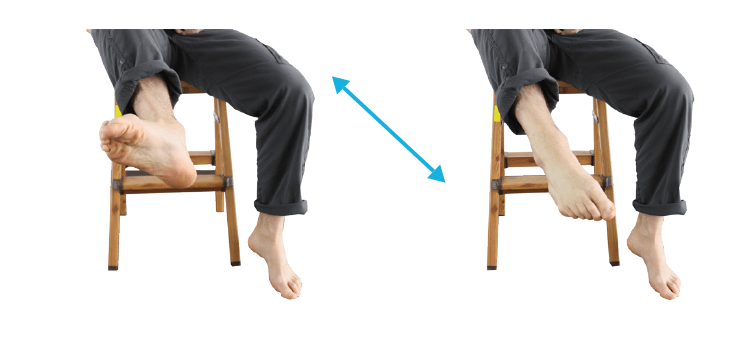
- With this exercise, you’ll work on diagonal patterns for the feet and ankles.
- Trace an ‘X’ with your foot, bringing it from the outer/upper corner, down to the inner/lower corner, then from the inner/upper corner, down to the outer/lower corner.
- Start by practicing this on the ground or sitting on a chair. As you get more comfortable you can try working on this while standing.
Do 10-20 reps for 2-3 sets.
4. Rolling Up Onto the Toes

- Start in any position that’s comfortable for you, whether that’s in a full squat like Rachel demonstrates in the video, or in more of a lunge position, or with hands supported on something. Just have one foot in front, and one foot behind.
- Roll forward so you’re up on the toes of the front foot. Go as far forward as you can comfortably go.
- Play around with the positioning, and make sure to work on both sides.
Do 5-8 reps for 3 sets.
5. Squats with Ankle Rotation

- The main action with this exercise is rolling the ankle in and out.
- You can do this from a squat position like Rachel shows, or you can do this while sitting on a stool or chair–whatever works best for you.
Do 5-8 reps for 3 sets.
6. Ankle Rolling Side-to-Side
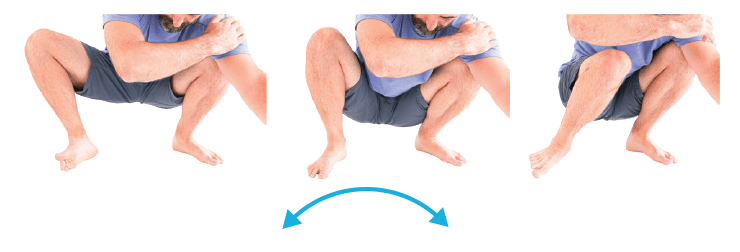
- This exercise emphasizes strengthening the ankle in unusual positions with weightbearing. By doing this while standing, your ankle will be bearing some of your bodyweight (but only put as much weight as is comfortable).
- Lift up onto the toes of one foot, and shift the weight on the toes from side-to-side. Repeat on the opposite foot.
Do 5-8 reps for 3 sets.
7. Weightbearing Ankle Circles
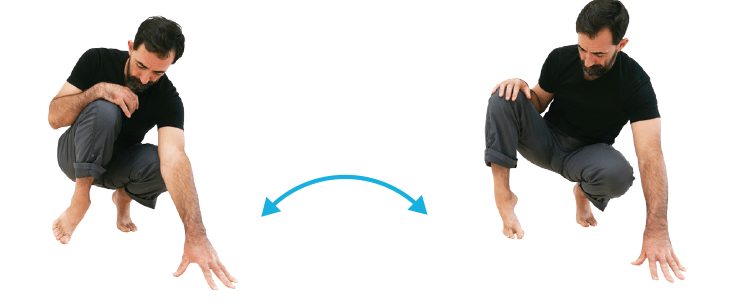
- With this variation, you’ll lift your toes off the ground so that you’re just on the heel of your foot. Again, you’ll do this standing so that your ankle is bearing weight, but you can adjust how much weight to your comfort level.
- Rotate the ankle in one direction, then go in the opposite direction. Repeat on the other side.
- You’ll then do the same exercise, but this time, go up on the ball of your foot and perform ankle circles with the heel off the ground.
Do 10 reps in each direction for 2 sets.
8. Calf Raises
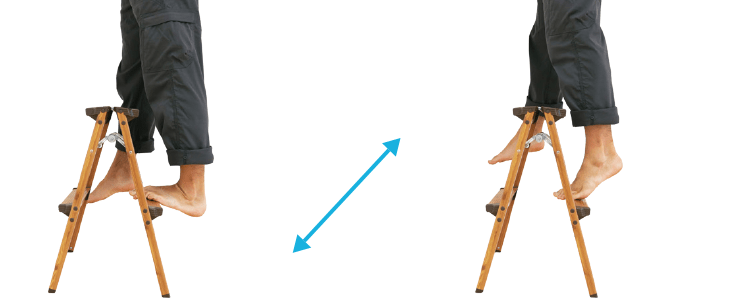
- For this exercise, you can either elevate the leg on a stool or step, or you can do this on the ground.
- If you are up on a step, you’ll lower one or both heels down toward the ground until you feel a nice stretch in the calves. Then, press through the balls of the feet to lift the heel up. Do this slowly, and with control.
- From the ground, just focus on lifting the heels up, then slowly lowering.
- Try this with both straight and bent legs.
Do 8-12 reps for 3 sets.
2 Fundamental Calf Stretches
A common complaint we hear from people is their lack of ankle flexibility, which can get in the way of lots of exercises, including pistol squats and various locomotive patterns.
The calf muscles are a very dense muscle group because we use them constantly–even just in standing and walking. And the ankle joints, because of the lack of variety of motion throughout the day, tend to be stiff and immobile. This can require aggressive stretching, in terms of load, not intensity, to achieve improvements in range of motion.
The following exercises are not fancy at all, but they work extremely well if you are consistent and approach it the right way. I recommend doing this in shoes, so that it’s more comfortable.
Here are the two main stretches you’ll focus on for the calves:
1. Straight Leg Calf Stretch
- Stand with one foot up on a stool or step (anything elevated), with your legs straight.
- Drop the heel down off the edge of the step until you’re in a comfortable stretch (don’t move into pain), and hold. Repeat on the other side.
- This variation emphasizes a gastrocnemius stretch.
Hold for up to 60 seconds for up to 3 sets.
2. Bent Leg Calf Stretch
- This time, you will bend your leg, which changes the stretch a bit.
- Just like with the previous variation, drop the heel of one foot down off the edge of a step until you are in a comfortable stretch, then hold. Repeat on the other side.
- This bent knee version gives the calf muscles a bit of slack and thus puts more of a stretch in the ankle joint.
Hold for up to 60 seconds for up to 3 sets.
Stretch before active movement such as the strength and motor control exercises above so that your body learns to adjust and retain the new range of motion from the stretching.
7 Self-Massage Techniques for Healthy Feet, Ankles, and Calves
A bit of self massage work is very useful in the lower leg and foot to loosen some tension prior to stretching and exercise.
The massage itself doesn’t make you more flexible, but it does temporarily help you feel less tight and gives you a window of opportunity to stretch further with less discomfort.
There are, of course, many different techniques you could use for self-massage, but these are some of our favorites for these areas.
1. Arch of Foot
- Start towards the heel, moving forward towards the toes.
2. Top of Foot
- Move the pressure towards your toes, between the tendons.
3. Inner Calf
- Start at the top of the calf, moving down toward the ankle.
4. Outer Calf
- Start at the top of the calf, moving down toward the ankle.
5. Front of Shin
- Move from the top of the shin down toward the ankle.
6. Arch of Foot with Ball
- With a LaCrosse ball, start towards the heel, moving forward towards the toes.
7. Calf with Ball
- With a LaCrosse ball, start at the top of the calf, moving down toward the ankle.
Keep the pressure light at first then gradually increase the pressure. If you are doing it correctly you’ll notice an easing off of tension in the muscles. You can then add more pressure and continue if you feel you need it, or move on to the next area.
The calf can be especially sore to massage deeply, so be aware of this and go gradually until you get accustomed to the pressure. As Rachel demonstrates, you can also use a ball to change the pressure and get into the muscles from a different angle.
Just make sure not to overdo it, the trick is to apply just enough pressure to ease tension, not push as hard as you can to force it to happen!
Where Should You Start?
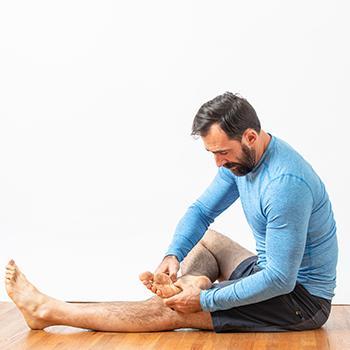 As you can see, I’ve included a LOT of different exercises and techniques above, some for the feet, some for the ankles, others for the calves. You may wonder where to start, and how to know where your particular issues lie.
As you can see, I’ve included a LOT of different exercises and techniques above, some for the feet, some for the ankles, others for the calves. You may wonder where to start, and how to know where your particular issues lie.
As you saw earlier, the muscles and tendons and ligaments from the top of the calves all the way down to your toes are very interlinked, and can’t really be separated.
So, chances are, if you’ve got pain or limitations in your feet, you can benefit from the calf stretches included below. And likewise if you’ve got “tight ankles,” spending time on motor control exercises for your feet can be immensely helpful.
Although there are many exercises and techniques below, if you follow the recommended hold times and/or reps, you’ll find that, even if you do all the exercises, it will only take a few minutes per day. And you’ll quickly discover which exercises give you the most benefit for your particular issues.
I’d recommend starting by going through all the exercises included, sticking with that for a week or so, and then cutting your routine down to the most essential exercises that give you the most benefit.
And if you want some additional help in these areas, locomotive exercises like we teach in our Elements program, can be very helpful for improving ankle and calf flexibility, as well as overall healthy function of the feet. Using the exercises below in addition to a locomotive practice will do wonders for your feet, ankles, and calves.
Also, this article over on Nerd Fitness will help you with finding the best shoes for your foot issues. We also cover whether or not you should go barefoot or use specific shoes for your training.
Short On Time? Try These 2 Exercises
We put together a quick video of some simple exercises you can do just about anywhere and it won’t take but a few minutes.
The 2 exercises are:
- Ankle Mobilizations
- Lacrosse Ball Massages
For the ankle mobilizations, you’ll do 5 pulses with a 10-second hold at the end. Do this for 2-3 rounds for each ankle.
When doing the lacrosse ball massages, find a tender spot on the calf and hang out there for about 5-10 seconds or until the tightness/tender feeling slowly dissipates. Work from the top of the calf down to the ankle working on all tender areas. Do this for the outer and middle calf as much as you need to.
Keep Your Feet Healthy for a Lifetime
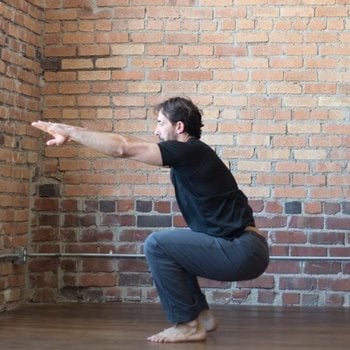 Our ankles and feet are too often under-exercised and taken for granted considering how much we rely on them everyday. It’s no surprise that this neglect of their full range of motion and total potential for coordinated movement can lead to stiffness and weakness, and perhaps even pain.
Our ankles and feet are too often under-exercised and taken for granted considering how much we rely on them everyday. It’s no surprise that this neglect of their full range of motion and total potential for coordinated movement can lead to stiffness and weakness, and perhaps even pain.
This article focused on simple, yet effective exercises that not only lessen the chances of potential injury, but may also reverse some damage that has already been done (barring any true injuries in need of surgery or more intensive therapy).
Assess and Address Your Chronic Stiffness and Pain at the Source
Fix the restrictions causing pain in your neck, shoulders, back, hips, knees, and ankles.
- Backed by over a decade of clinical physical therapy experience
- Specific interventions and preventative exercises for the most common issues
- Detailed video instructions for each exercise
